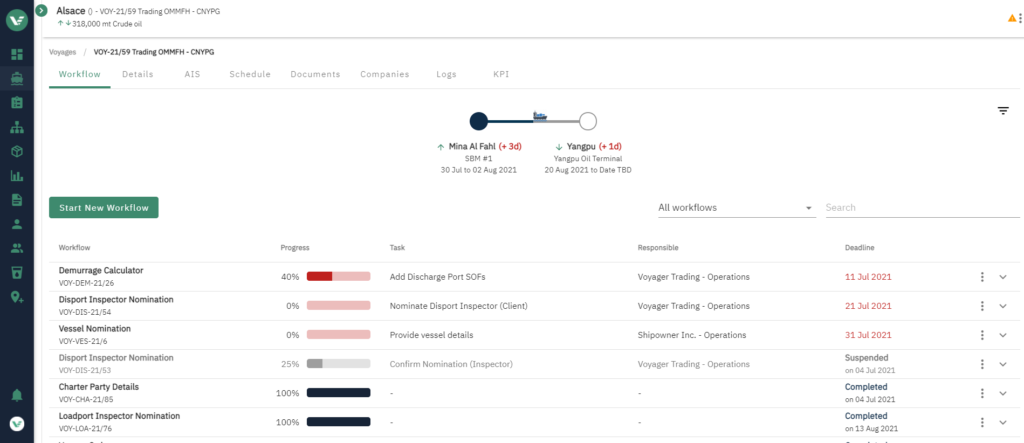What is workflow and what is low-code?
A workflow is a combination of tasks that, when combined, gets a job done. For some, workflows come naturally from years of experience. For others, their workflows will involve jumping between different systems, departments, and companies. However, a low-code workflow application allows customers to design their own workflow process.
A common interface
When they do this, maritime professionals can execute those processes within a common, sharable interface. Low-code terminology simply means that, with a very basic understanding of data, you can design and implement your own workflows. This puts process-optimization in the hands of every user!

5 reasons why a workflow application makes sense for managing marine supply chains:
- Speed. Standard and dynamic workflows processes allow teams to execute faster with the help of automation, API automation, and easy-to-follow steps.
- Risk. In the shipping industry, incorrect communication of information can cost a company millions of dollars in penalties, fees, or lost earnings. Workflows ensure procedures are followed and everyone is on the same page.
- Data. 95% of your marine data will never make it to your ERP! Using workflows encourages tasks to be completed with structured data. This can vastly accelerate analysis, analytics, or AI initiatives within the company.
- Visibility. Best-in-class workflows allow companies or departments to work together. Privacy is not sacrificed. This communal process ensures all your stakeholders are operating on the same page. This will eliminate long, communication chains
- Efficiency. Companies that adopt workflows for key processes completely eliminate emails and XLS from parts of the business. This helps teams save up to 40% of their day in the email and data process!

Maritime examples of workflows that are perfect for a low-code application like Voyager Portal
While almost anything can become a workflow, some of the most common processes include:
- Vessel nominations
- Surveyor nominations and result collection
- Invoicing
- Claims management
- Requests-for-Quote
- Document collaboration and creation
- Voyage orders
- Agent appointments
- Vessel vetting
- ETA collection and analysis
Across all verticals of the maritime industry, we have identified close to 1,000 workflows being executed every single day!
Here are some best-in-class attributes of a low-code workflow application to look out for.
- You can design and customize your own unique workflow processes.
- Internal and external parties can work together to execute different steps of the workflow.
- The workflow application can integrate seamlessly with existing internal and external systems via API.
- Workflows can match 1-for-1 with your existing processes.
- Workflows can be layered with automation capabilities such as document-processing.

